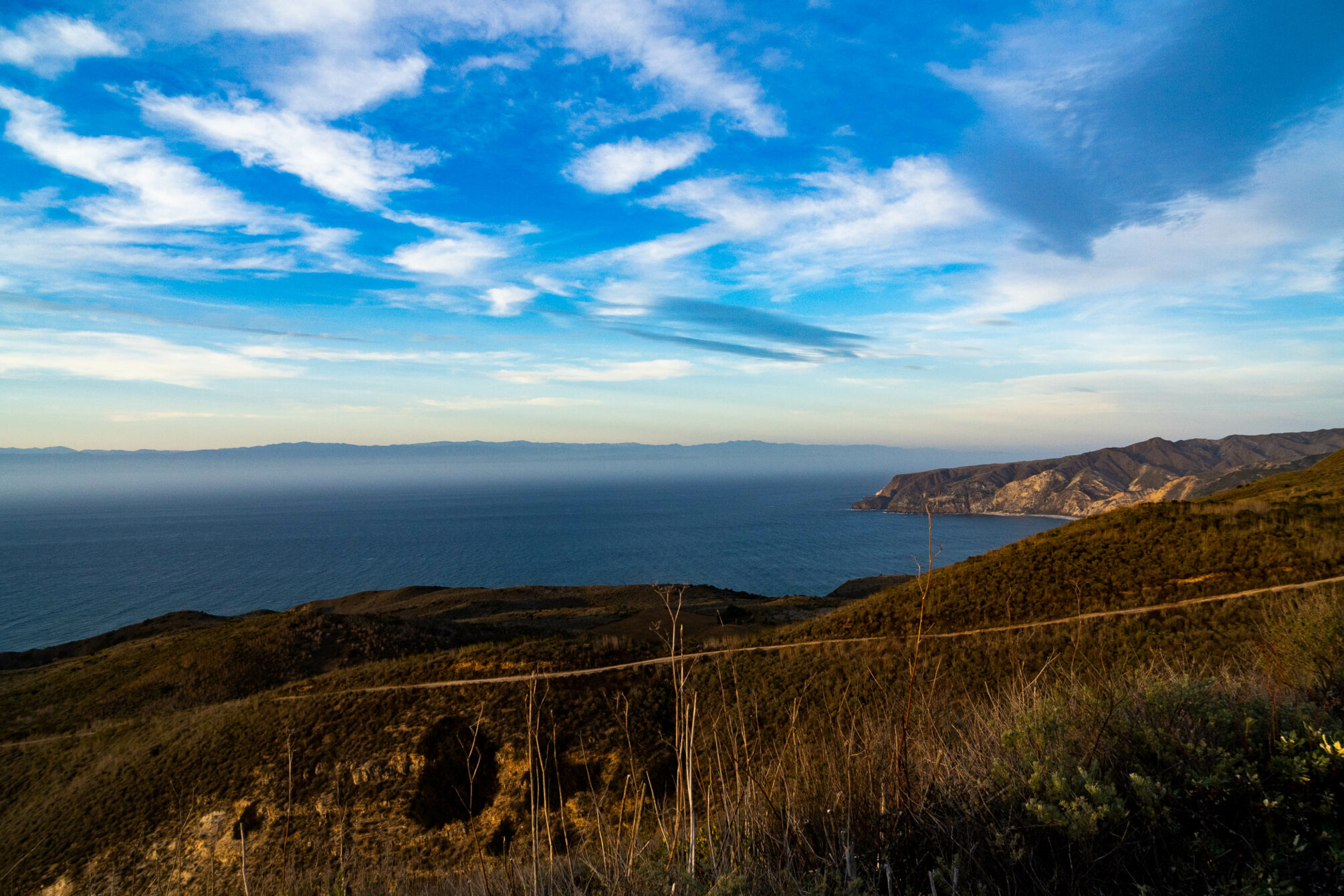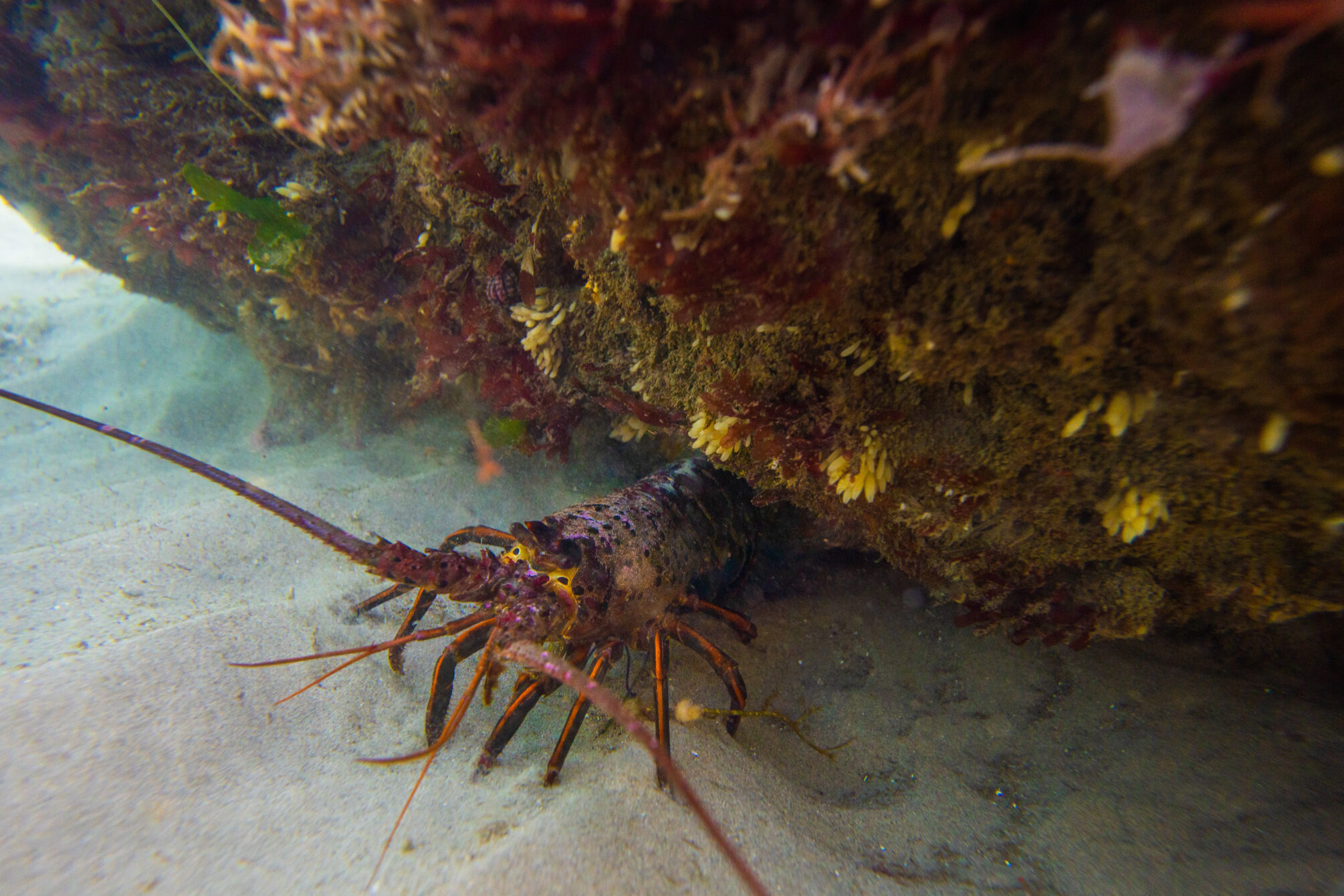Over a decade after the network’s inception, researchers at the Santa Barbara Coastal LTER show that lobster spillover from Marine Protected Areas caused a 400% increase in lobster abundance just outside of the protected areas between 2008 and 2018.

By closing off large portions of the ocean to fishing, Marine Protected Areas are designed to protect critical ocean habitat and shelter vulnerable species—but the closures and species protection affect local fishing, too. A new paper by the Santa Barbara Coastal LTER shows how the benefits of MPAs for the local lobster fishery change over time. They found that lobster catches outside of the MPA continued to increase for the first fifteen years after the network was established. Their results complement earlier research that shows MPAs benefit fisheries after just a few years of closure by showing that the fishery benefits only improve over time.
What was good is getting better
The short-term effects of Marine Protected Areas in California are well documented: a long suite of research shows that the network boosts local biodiversity and fosters healthier marine ecosystems. And, despite restricting fishing along a relatively large portion of the coast, protected areas have led to increased catches for local fisheries.
Situated adjacent to several MPAs, the Santa Barbara Coastal (SBC) LTER studies how MPAs affect coastal fisheries and habitats in fine detail. Now, the LTER is focused on how the effects of those restricted areas change over time. A new study, focused on the local lobster fishery, shows that lobster catches at the Channel Islands MPAs showed continued increases through the first fifteen years of the network.
The study focused on spillover, the key mechanism in which fishery catches can increase despite MPAs closing significant coastal area to fishing. MPAs provide respite in which fishery populations—lobsters in this case—can proliferate. Healthy populations boom in number, and eventually, legal sized lobsters migrate over the line into areas where fishing is legal.
The team first developed a trapping scheme in 2008, 5 years after the MPAs were implemented, that allowed them to study spillover. In 2018, they repeated the sampling to see how spillover changed over time.
Their results were staggering. Lobster populations within the reserve had doubled since 2008. But just outside the reserve, legal sized lobster showed a near 400% increase over the same decade.
Previous studies from the SBC LTER show that the spillover benefits from MPAs had already outweighed the cost of restricting fishing grounds in these MPAs a mere 5 years after their implementation. But those benefits continue to accrue as the MPAs mature, this study shows, and the MPAs now provide more to fishers than they did ten years prior.

Thinking like a lobster (fisher)
Key to this research, says Dr. Hunter Lenihan, lead author of the paper, was to simulate lobster fishing as accurately as possible. Fishers care about actual catches—they translate directly into dollars earned—not metrics such as biomass or abundance.
The team partnered with local lobster fishers to train a graduate student, (now Dr.) Matt Kay, as a bona-fide lobsterman. “The fishery took him on and trained him for a whole year on the fish”, says Dr. Lenihan. “And then we created our own fishing boat at UCSB, and he went and fished for data with the strategy.” A decade later, fishers trained another PhD student, Scott Fitzgerald, to conduct the repeat study.
Using tactics gleaned through experience with lobster fishers, the team could trust that their catch data accurately simulated what a local fisher might experience. But involving the fishing community had other important benefits, too. “Because they trained him,” Dr. Lenihan notes, “the fishers believe the data we get.”
And building trust with local lobster fishers was a goal in itself, says Dr. Lenihan. Fishers felt their interests were ignored when the California MPAs were created. Since then, they’ve been wary of MPA related science that claims to show some benefit to their fisheries. Involving fishers in this research was an important way to begin rebuilding trust between the two parties.
On lobster time
In conjunction with other SBC LTER research, this study highlights that the benefits of MPAs on fisheries are highly context dependent. At the Channel Islands MPAs, the subject of this study, lobster fishers saw huge benefits fifteen years after the MPAs went in. But other research by the SBC LTER shows that coastal MPAs see fishery benefits in as few as six years. The reasons for this are complicated, with fisher behavior, location, fishing pressure, and possibly other factors delaying the response. But the data do highlight an important consideration for MPA management: that not all MPAs are created equal.
The Santa Barbara Coastal LTER is primed to dive deep into how individual local MPAs affect the ecosystem around them. Unlike the other agencies tasked with monitoring the 124 different MPAs across California, the SBC LTER has the time and resources to dive into research questions specific to their local MPAs, says Dan Reed, lead PI of the SBC LTER. In doing so, the LTER can begin to untangle the complicated effects the MPA network has on ecosystems, fisheries, and local livelihoods. For researchers at the Santa Barbara Coastal LTER, unraveling the lobster story was just a first step.










